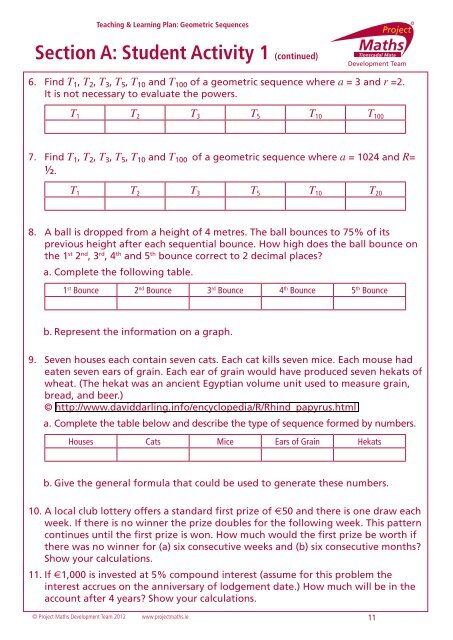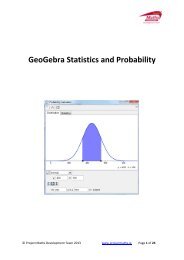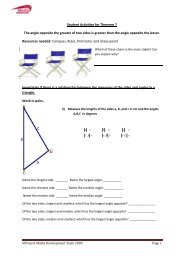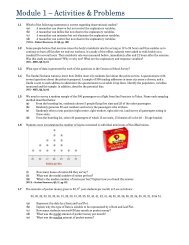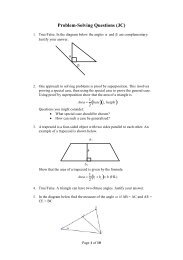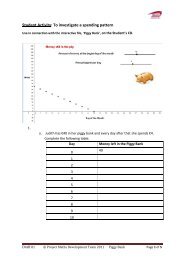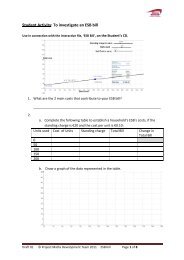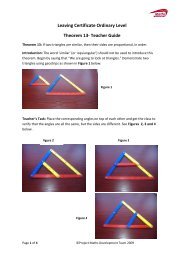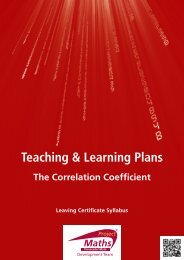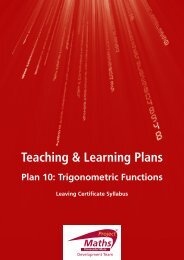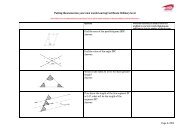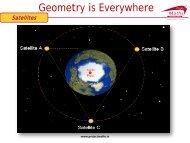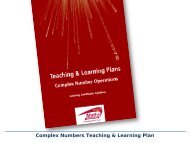Create successful ePaper yourself
Turn your PDF publications into a flip-book with our unique Google optimized e-Paper software.
Teaching & Learning Plan: <strong>Geometric</strong> <strong>Sequences</strong><br />
Section A: Student Activity 1 (continued)<br />
6. Find T 1 , T 2 , T 3 , T 5 , T 10 and T 100 of a geometric sequence where a = 3 and r =2.<br />
It is not necessary to evaluate the powers.<br />
T 1 T 2 T 3 T 5 T 10 T 100<br />
7. Find T 1 , T 2 , T 3 , T 5 , T 10 and T 100 of a geometric sequence where a = 1024 and R=<br />
½.<br />
T 1 T 2 T 3 T 5 T 10 T 20<br />
8. A ball is dropped from a height of 4 metres. The ball bounces to 75% of its<br />
previous height after each sequential bounce. How high does the ball bounce on<br />
the 1 st 2 nd , 3 rd , 4 th and 5 th bounce correct to 2 decimal places<br />
a. Complete the following table.<br />
1 st Bounce 2 nd Bounce 3 rd Bounce 4 th Bounce 5 th Bounce<br />
b. Represent the information on a graph.<br />
9. Seven houses each contain seven cats. Each cat kills seven mice. Each mouse had<br />
eaten seven ears of grain. Each ear of grain would have produced seven hekats of<br />
wheat. (The hekat was an ancient Egyptian volume unit used to measure grain,<br />
bread, and beer.)<br />
© http://www.daviddarling.info/encyclopedia/R/Rhind_papyrus.html<br />
a. Complete the table below and describe the type of sequence formed by numbers.<br />
Houses Cats Mice Ears of Grain Hekats<br />
b. Give the general formula that could be used to generate these numbers.<br />
10. A local club lottery offers a standard first prize of €50 and there is one draw each<br />
week. If there is no winner the prize doubles for the following week. This pattern<br />
continues until the first prize is won. How much would the first prize be worth if<br />
there was no winner for (a) six consecutive weeks and (b) six consecutive months<br />
Show your calculations.<br />
11. If €1,000 is invested at 5% compound interest (assume for this problem the<br />
interest accrues on the anniversary of lodgement date.) How much will be in the<br />
account after 4 years Show your calculations.<br />
© <strong>Project</strong> <strong>Maths</strong> Development Team 2012 www.projectmaths.ie 11


